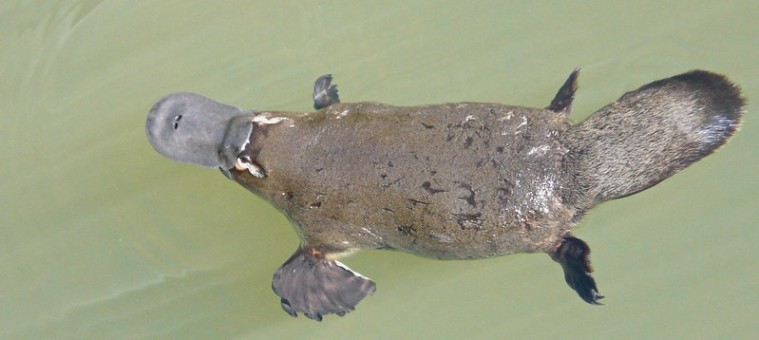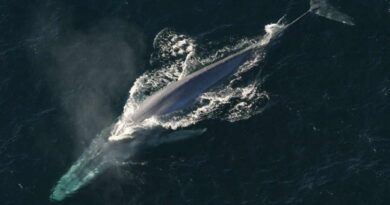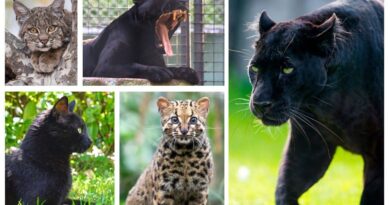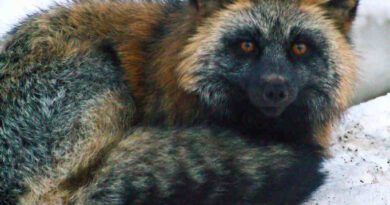PLATYPUS
The platypus would be the clear winner if there was a prize for the strangest animal in the world. This amazing mammal lives in the rivers of Australia. It looks like it was made by putting parts from other animals together. It looks like it has a duck’s beak, an otter’s body, and a beaver’s tail.
When its stuffed body was brought to Europe for the first time, people thought it was a fake. They were sure that someone in Australia had glued these parts together as a joke and tried to pass them off as a strange new animal. We now know that the platypus is a real animal, but it’s easy to see why experts didn’t believe it when they saw its dead body for the first time about 200 years ago. Jokers have been trying to pull pranks on museums for a long time, and the staff was worried that they would look stupid. They had been sent a few dried “mermaids,” which were actually the front halves of monkeys and the back halves of big fish that had been cleverly made together. The best ones came from China, where sailors paid a lot of money to buy them.
Unfortunately, the ship that brought the first dried platypus from Australia stopped in China on the way back, so people thought that the clever Chinese merchants had managed the sailors from other countries with yet another “fantastic creature.”
They didn’t realise they were wrong for a while, but eventually they figured it out. Here was a real animal that was very cool to see. They started to look into it right soon. Then, they found out that the platypus was even stranger than they had thought at first. Not only did it have an odd body shape, but it also had an even stranger way of having babies. It laid eggs like a bird but fed its young milk like a mammal when the eggs hatched.
We now know that the platypus is the only mammal that lays eggs, except for a few spiny anteaters called echidnas. There are 4,237 species of mammals alive today. So it really is a strange thing. If that wasn’t enough to make the experts scratch their heads, they also found out that the male platypus had a secret weapon that it used to stab its enemies and inject poison into them. Instead of hollow teeth, like a snake, the platypus has two sharp spurs, one on the inside of each back leg. It also kicks to defend itself. If one of these spikes hits a man’s arm, it hurts like hell and makes the arm swell up like a balloon for a few days. This is enough to make anyone treat a platypus with a lot of respect. Everyone was amazed by these first thoughts about this new animal, and it didn’t take soon for everyone to try to learn as much as they could about these amazing creatures. Here’s what they discovered:
The platypus digs its own homes into the banks of lakes or rivers. The tunnels it digs slope up toward the room where it lives at the far end. This means that the platypus’s sleeping area is above water level and is safe from flooding. It makes a special way. All four feet are webbed so that the animal can swim quickly under water, but the webbing on the front feet goes beyond the end of the fingers. This makes them into paddles for swimming. It makes the platypus look like it has flippers on its feet, like a person who swims. If you’ve got
If you’ve ever snorkelled while wearing flippers, you know how awkward they are on land. The same thing is hard for the platypus. We humans get rid of the problem by taking off the flippers. When the animal gets to shore, it folds it up with its claws. This lets it use its strong claws to dig its hole.
During mating season, males and females sleep in different places. The male stays in the usual living space, but the female leaves to build her own private nesting burrow, where she will give birth and raise her young. As the moment for laying eggs gets closer, she carefully lines her nest with wet leaves. She carries these leaves through her long tunnel not in her hands or mouth, but in her curled-up tail, which she uses to hold the leaves tightly. She needs to keep her den damp, so it’s important that they are wet. This will keep the eggs she lays from drying out after she lays them.
She then does something amazing. She goes to the entrance of her tunnel and walks down it in a special way to get to her nest. She keeps stopping as she walks along the passageway. At each stop, she pushes a plug of earth into the space behind her and pats it down with her tail. The tunnel could be up to 33 metres long, and she makes these little barriers all along it.
Each earth-plug is about 15 centimetres thick and keeps the outside world out of the precious nest chamber. If a killer walks down the way sniffing for food, it will soon find the first of these platypus earth-plugs. If it doesn’t trust it, it may dig or push into it, break through, and find itself back in a tunnel that looks tempting. When it sets moving again, it soon hits the second barrier. It’s getting less interesting, but maybe it’s worth giving it one more shot. So, the second plug is worn away. Then there’s a third obstacle, which is just too much. It makes trying, turns around, and heads for the door.
The platypus didn’t get found. The female sits down to lay her eggs in her closed-off nest, where she is safe and warm. There are usually only two or three of them, and they feel soft to the touch. This is because, unlike bird eggs, they don’t have hard shells, but instead have a rubbery skin like reptile eggs. These eggs are glued together in a little clump and are kept warm by the mother’s big, furry body for about ten days before they are ready to hatch. She doesn’t feed during this time.
Even though she is hungry, she stays in the den for days at a time, with her body curled around her young to protect them. When she does leave the nest, which isn’t often, it’s only for a very short time to wash and wet her fur. It’s likely that she does this for both her own good and the good of her eggs. She has to keep the den moist for them, which isn’t easy. Keeping her fur moist can be very helpful, so when she thinks the nest’s bedding is getting too dry, she goes down the long tunnel and carefully sets out each earth plug, one at a time. Once she’s outside, she quickly soaks her fur in some nearby water. Then, she runs back down the tunnel and makes all the earth plugs back in place to close it again.
When the babies hatch, they are very small, about as long as your fingernail. Most Australian mammals protect their young by keeping them in a pouch made of fur on the underside of the mother. However, the platypus doesn’t have a pouch, so it can’t do this. This is why it is so important to keep them in a safe nest for the first few weeks of their lives. The milk that is dripping from their mother’s soft fur is soon lapped up by the babies. She doesn’t have any nipples like other mammals do, so they have to nuzzle up to her fur and lick the milk that they find coming out of the pores in her skin. It’s an old-fashioned way to feed the young, but the platypus is an old-fashioned kind of mammal.
After about 16 weeks, the young are ready to go swimming for the first time and find looking for their own food. The mother lets them go through the tunnel, and then they jump into the water. At first, they aren’t very important at hunting, but that doesn’t matter because their mother will feed feeding them and keeping them safe for a few more weeks. After a month, the young platypuses are finally able to take care of themselves, and the mother is no longer needed. Since her long fast in the nest, when she had to starve herself to keep the secret of her new babies, she has been eating like crazy and is back to her full body weight. The duck-billed platypus is one of the animals that eats the most. To get an idea of how greedy it is, try to picture yourself eating a meal that weighs almost as much as you do in one night. One pet platypus ate 30 crayfish, 450 grammes of earthworms, 200 mealworms, 2 frogs, and 2 chicken eggs every day.
Most animals that eat a lot do so because the things they eat, which are usually plants, don’t have much nutritional value. But the platypus eats high-food animal foods, which makes it one of the healthiest animals in the world. In the wild, the platypus hunts, grabs, and eats all kinds of water creatures as if it will never see food again. It eats worms, frogs, crayfish, shrimp, prawns, tadpoles, water insects, water snails, and anything else small that moves. Most of them come up from the muck at the bottom of the river, which is where their famous duckbill comes from.
This long, weird-looking nose is covered of soft, bare, leathery skin and is full of nerve endings that are very sensitive. The platypus pushes it around in the mud until it comes in contact with an animal that it can eat. The huge snout can tell the hunter right away what it has found and whether or not it can be eaten. If it is, the jaws open and the object is eagerly snatched into the mouth.
All of this is done while the platypus’s eyes and ears are tightly shut. They can’t be opened while the animal is underwater, so it has to hunt and eat using only its senses of touch and smell. Since the platypus is a mammal that breathes air, it can’t stay under water for very long. It is only about 60 centimetres long, so it has to come up to the surface about once a minute to get a breath of air. This means that each hunt has to be short and quick. Most of the time, the platypus pushes the prey it has caught into special pockets in its cheeks. This saves time. The hunter comes up to the surface, rests for a moment, and then starts to crunch up what it has caught. The adult platypus can’t do this because it doesn’t have any teeth. Its mouth instead has hard, horny ridges that it uses to crush food. As soon as it has swallowed everything, it goes back down into the mud to look for more food.
On a normal day, the animal will hunt for only an hour in the early morning and another hour in the evening. Most people think it is mostly water, but it is not. It can eat all the healthy food it wants and still have a lot of time to rest, sleep, clean its fur, and make improvements to its burrow. This sounds like the perfect way for any animal to live, and that’s how it was before modern people came along. From the platypus’s point of view, bringing rabbits from England was the worst thing the new settlers did, other than hunting them for their skins. There were so many of them that they started to burrow into the riverbanks and make huge nests, which drove the shy platypus away from its favourite places.
When people in Australia realised that rabbits were becoming a big problem and started catching them, the platypus’ problems were far from over. Even though there were fewer rabbits, the riverbank traps that had been set for them also caught and killed any platypuses that had managed to stay away from the rabbits. On top of that, fishermen began using a new kind of fish trap in the rivers, which also killed a lot of platypuses. When they swam into the wire cages of the traps, they couldn’t find their way out again. They soon drowned because they couldn’t get to the surface to breathe. So, what was once a very popular animal was in danger of going extinct soon. Happily, people eventually realised that this amazing animal was in danger of going extinct, and it is now completely safe. Its population has grown, and it is once again doing well. As long as the pollution that is getting worse in many parts of the world doesn’t reach the rivers in Australia, the unique platypus should be safe.



